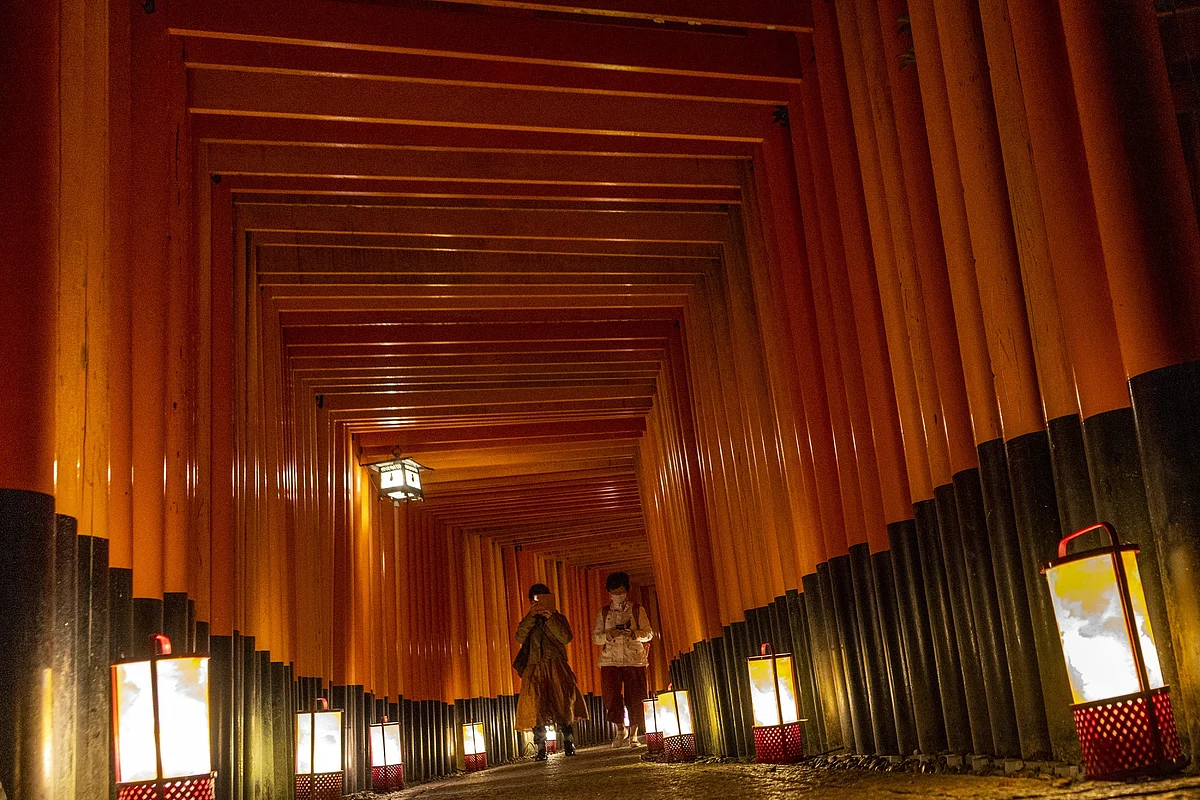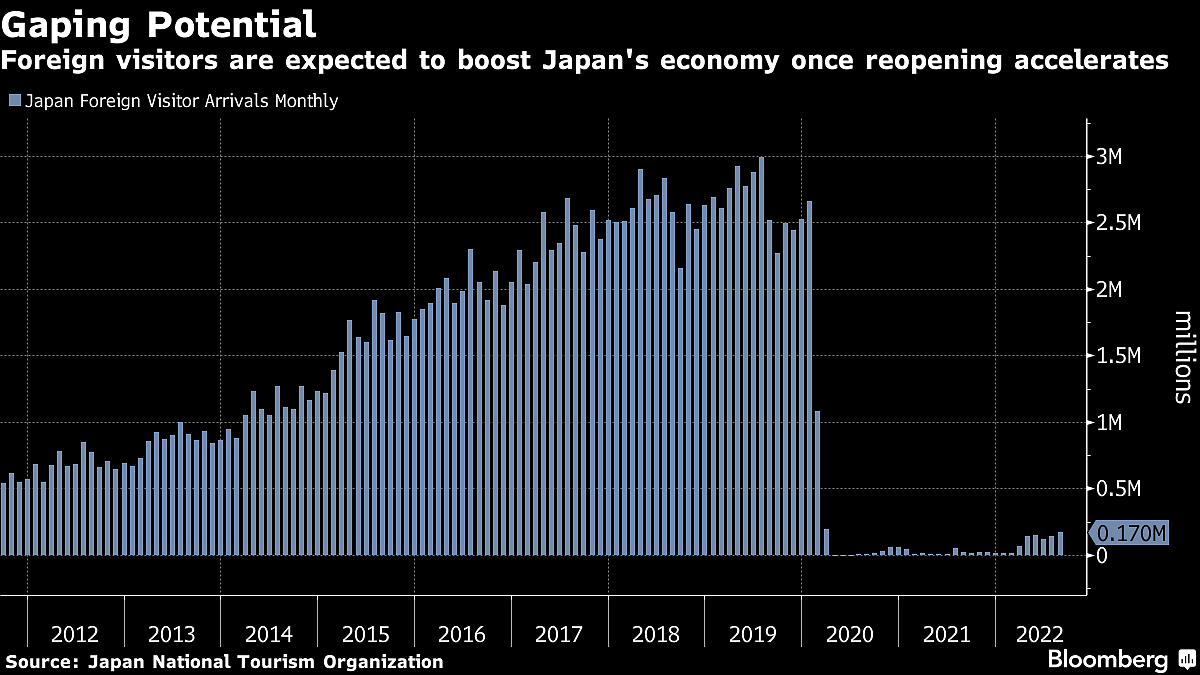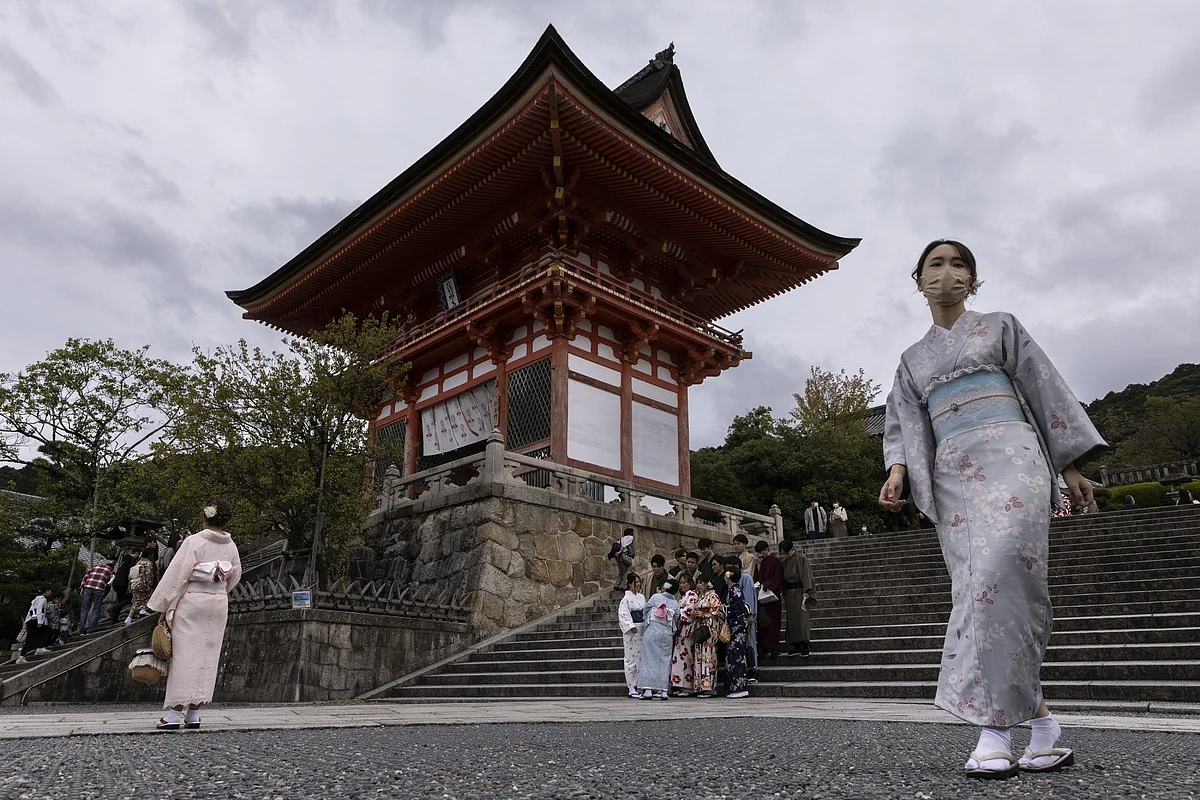Japan Reopens Borders, Betting On Tourism Recovery Boom
Japan has started accepting vaccinated visitors from 68 countries without visas, ending almost three years of tighter border controls.

(Bloomberg) -- Japan began accepting vaccinated visitors from 68 countries without visas Tuesday, ending almost three years of tighter border controls that kept tourists out of the island nation.
With the yen at quarter-century lows against the dollar, along with relatively tame inflation, Japan is an affordable and attractive destination for overseas visitors such as Forrest Lin, a travel agent from Portland, Oregon.

“This is an unique opportunity to travel right after the border opens because things are going to get so busy,” said Lin, 32, who will arrive Wednesday and stay for more than a week. Drawn by the food, the travel agent said he plans to splurge a bit. “I feel less guilty eating nicer meals and staying at nicer hotels” thanks to the weaker yen, he said.
As one of the last remaining rich economies to reopen for tourism, there’s anticipation of an economic lift that could eclipse the pre-pandemic travel boom. Inbound spending could rise by 32% to 6.6 trillion yen ($45.4 billion) annually after a full reopening compared with 2019, according to a recent report by Goldman Sachs economists.
That’s welcome relief, although too late for the 4,000-plus enterprises that folded after retailers adopted curbs in early 2020 on operating hours. Retailers, hotels and restaurants are all eager to regain the business they lost.

Japanese airlines are already ramping up international flights, and domestic travel is also picking up, with many residents taking advantage of the lack of lines and affordable prices. The country was at the peak of a tourism boom before the pandemic, with a record 32 million inbound visitors in 2019.
Despite the hype around the reopening of Japan’s borders, the speed and scale of a tourism recovery remains difficult to gauge. A limited reopening in June for group tours failed to attract any meaningful traffic. Visitors from China, who accounted for more than a third of tourist spending before the pandemic, are still mostly restricted from inbound and outbound travel as part of the country’s Covid Zero policy.

It will take about two years for inbound visitors to reach pre-pandemic levels, according to Takahide Kiuchi, an economist at Nomura Research Institute. There’s still a hotel-room shortage across the country, which is bound to worsen unless more Japanese choose to travel abroad rather than domestically, Kiuchi wrote in a recent report.
More stories like this are available on bloomberg.com
©2022 Bloomberg L.P.